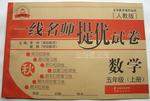题目内容
Restoring the quake?hit ecosystems is a question of balancing the interests of the local people and the environment. Rural methane (沼气) projects can reduce the number of locals taking firewood from the mountainsides. The use of straw as food for animals will ensure that vegetation(草木) can grow. In Sihai township and Dazhuangke village, in Beijing, they now have a forestry coverage of 85% or more, compared to the 30% they had 15 years ago. Back then, land was used very inefficiently: one person would use 20 mu of forest just for firewood. With those pressures on the ecosystem, no amount of spending on reforestation will succeed. Then the government relocated the population and paid those who remained to tend the forest and provide coal. This reduced the pressures on the ecosystem and it was able to recover naturally.
When an ecosystem has not been pushed past certain limits, it is able to recover on its own. Human involvement should only play a minor role, including after an earthquake. This is particularly the case for sandy grasslands, grasslands deserts, the mountains of the south and the northern sides of mountains in the north. In these areas soil remains and the water, light, heat and nutrients needed are available. Less human involvement is even more appropriate in areas with a small population, where it can avoid money being wasted on ineffective efforts, such as creating forests in dry areas.
The creation of nature reserves should be a model to allow damaged ecosystems to recover. Funding can start at the national level; centrally?funded nature reserves can enforce environmental protection laws and help to promote the local economy. This will solve the problems of reserves being run to make money. When national reserves are funded, local governments will be able to adopt the same model and provide the funds for nature reserves from their own budgets. The first project should be established in nature reserves hit by the quake; these can then become models for other areas
- 1.
To restore the quake?hit ecosystem, government should ________
- A.forbid locals from taking firewood from the mountainsides
- B.encourage local people to feed their animals just with straw
- C.spend large amounts of money relocating the population
- D.protect the environment without harming locals' interests
- A.
- 2.
The forestry coverage in rural Beijing has increased greatly because ________
- A.pressures on land were reduced
- B.a large amount of coal is provided
- C.no people live in that area
- D.locals take good care of the forest
- A.
- 3.
According to the passage ________ play(s) a major role in ecosystem recovery
- A.local people
- B.nature itself
- C.human involvement
- D.government's effort
- A.
- 4.
According to the last paragraph, which of the following is NOT true?
- A.Nature reserves could be helpful to recover the damaged ecosystems
- B.Centrally­funded nature reserves are beneficial to local economy
- C.Some nature reserves are created for the purpose of making money
- D.The first projects on nature reserves should be set up in quake­hit areas
- A.
试题分析:本文叙述了人们应当保护环境,在一些地区由于土地的减少,绿地覆盖率相对的提高了,但是自然的破坏还需要自然自己去修复,这就需要人们在一些受灾区应该采取适当的措施来保护生态环境,比如可以建立自然保护区的方法来使自然恢复常态。
1.细节理解题。根据Restoring the quake­hit ecosystems is a question of balancing the interests of the local people and the environment. 既要保护环境又要顾及人们的兴趣,故选D。
2.推理判断题。根据they now have a forestry coverage of 85% or more, compared to the 30% they had 15 years ago. Back then, land was used very inefficiently: 由于土地的面积减少,使绿地的覆盖率相对的增加,故选A。
3.细节理解题。根据When an ecosystem has not been pushed past certain limits, it is able to recover on its own.自然在生态环境的恢复上起着重要的作用,故选B。
4.细节理解题。根据The first project should be established in nature reserves hit by the quake;在地震受灾区应该建立自然保护区,故选D。
考点:环保类短文阅读。

 一线名师提优试卷系列答案
一线名师提优试卷系列答案 阳光试卷单元测试卷系列答案
阳光试卷单元测试卷系列答案It’s easy to see how the sawfish got its name. These frightful creatures can grow to be more than 6 meters long. Their bodies are flat and winged, like underwater airplanes. And their noses are shaped like chainsaws.
Sawfish are food hunters of the sea. When a sawfish is hungry, it waves its sharp-toothed snout(口鼻部)through a group of fish. Then, it lifts its nose and uses its mouth to draw the injured victims.
Hardy(适应力强的)population of sawfish thrived in warm waters along coastlines around the world for thousands of years. Over the past 200 years, however, human actions have severely endangered sawfish. Threats include fishing nets that trap the huge animals, often by mistake.
Some people collect sawfish’s snouts as prizes: One snout recently sold for nearly $ 1,600 online. In some Asian cultures, the toothy snouts are used in ceremonies to drive evil and disease away. And sawfish are also delicious. A growing demand in Asia for the fish’s fins for a pricey soup has contributed to the fish’s loves. Compared with other fish, sawfish give birth late in life and at slow rates, which makes it hard for them to recover from overfishing.
New efforts now aim to restore sawfish population. Beginning next month, an international agreement will provide protection for all seven of the world’s sawfish species. Scientists are hoping that it’s not too late to save the sawfish.
Until 1998, “this fish had never been formally studied in the United States,” says Tonya Wiley of the Mote Marine Laboratory in Sarasota, Fla. “We didn’t know such basic things as where they live, what habitat they use, how often they breed, how many young they have — even what age sawfish are when they begin breeding.”
Through historical studies and field research, scientists have become aware of how much the fish’s numbers have decreased. Today, there may be 90 percent fewer sawfish than there used to be. Wiley estimates that only 3,000 to 6,000 sawfish remain in US waters.
Sawfish
|
Descriptions |
Size |
1.__________ |
||
|
2. __________ |
Body: Flat and winged |
Nose: Like a chainsaw |
||
|
3. __________ of hunting for food |
Attacking fish with 4.__________ |
|||
|
Drawing the injured victims with its mouth |
||||
|
5. __________ Sawfish’s disappearance |
6. __________ |
|||
|
Sawfish’s snout relates business |
||||
|
Its 7. __________ and slowly which makes it hard to recover from overfishing |
||||
|
8.__________ |
Only 10 % sawfish left |
|||
|
3,000 to 6,000 remain in US waters |
||||
|
Efforts |
9.__________ |
Measure |
||
|
Restoring sawfish population |
10. __________ all seven of the world’s sawfish species |
|||
It’s never easy to admit you are in the wrong. Being human, we all need to know the art of 31 . Look back with honesty and think how often you’ve judged 32 , said unkind things, pushed yourself ahead at the 33 of a friend. Then count the occasions 34 you indicated clearly and truly that you were 35 . A bit frightening, isn’t it? Frightening because some deep 36 in us knows that when even a small wrong has been 37 , some mysterious moral feeling is disturbed; and it stays out of balance until fault is acknowledged and 38 is expressed.
I remember a doctor friend, the late Clarence Lieb, telling me about a man who came to him with a variety of 39 : headaches, insomnia and stomach trouble. No 40 cause could be found. Finally my friend said to the man, “ 41 you tell me what’s worrying you, I can’t help you.” After some 42 , the man confessed that, as executor of his father’s will, he had been 43 his brother, who lived abroad, of his inheritance (继承权). Then and there the wise old doctor made the man write to his brother 44 forgiveness and enclosing a cheque as the first step in restoring their good 45 . He then went with him to mail box in the corridor. As the letter disappeared, the man 46 crying. “Thank you,” He said, “I think I’m 47 .” And he was. A heartfelt apology can not only heal a damaged relationship but also make it 48 . If you can think of someone who 49 an apology from you, someone you have wronged, or just neglected, do something about it 50 .
|
1. |
A. communicating |
B. expressing |
C. apologizing |
D. explaining |
|
2. |
A. roughly |
B. toughly |
C. gently |
D. honestly |
|
3. |
A. risk |
B. expense |
C. loss |
D. mercy |
|
4. |
A. that |
B. how |
C. which |
D. when |
|
5. |
A. sorry |
B. regretful |
C. tolerant |
D. amazed |
|
6. |
A. wisdom |
B. pain |
C. fright |
D. tension |
|
7. |
A. ignored |
B. committed |
C. adjusted |
D. promoted |
|
8. |
A. regret |
B. curiosity |
C. devotion |
D. envy |
|
9. |
A. questions |
B. complaints |
C. signs |
D. conflicts |
|
10. |
A. spiritual |
B. immoral |
C. physical |
D. outward |
|
11. |
A. If |
B. Until |
C. When |
D. Unless |
|
12. |
A. recalling |
B. unconsciousness |
C. mediation |
D. hesitation |
|
13. |
A. accusing |
B. informing |
C. cheating |
D. warning |
|
14. |
A. calling for |
B. begging for |
C. reckoning on |
D. focusing on |
|
15. |
A. relationship |
B. situation |
C. condition |
D. attention |
|
16. |
A. burst out |
B. brought out |
C. gave out |
D. let out |
|
17. |
A. rescued |
B. cured |
C. sealed |
D. persuaded |
|
18. |
A. weaker |
B. maturer |
C. stronger |
D. fruitier |
|
19. |
A. borrows |
B. receives |
C. demands |
D. deserves |
|
20. |
A. for a moment |
B. at last |
C. right away |
D. in a while |